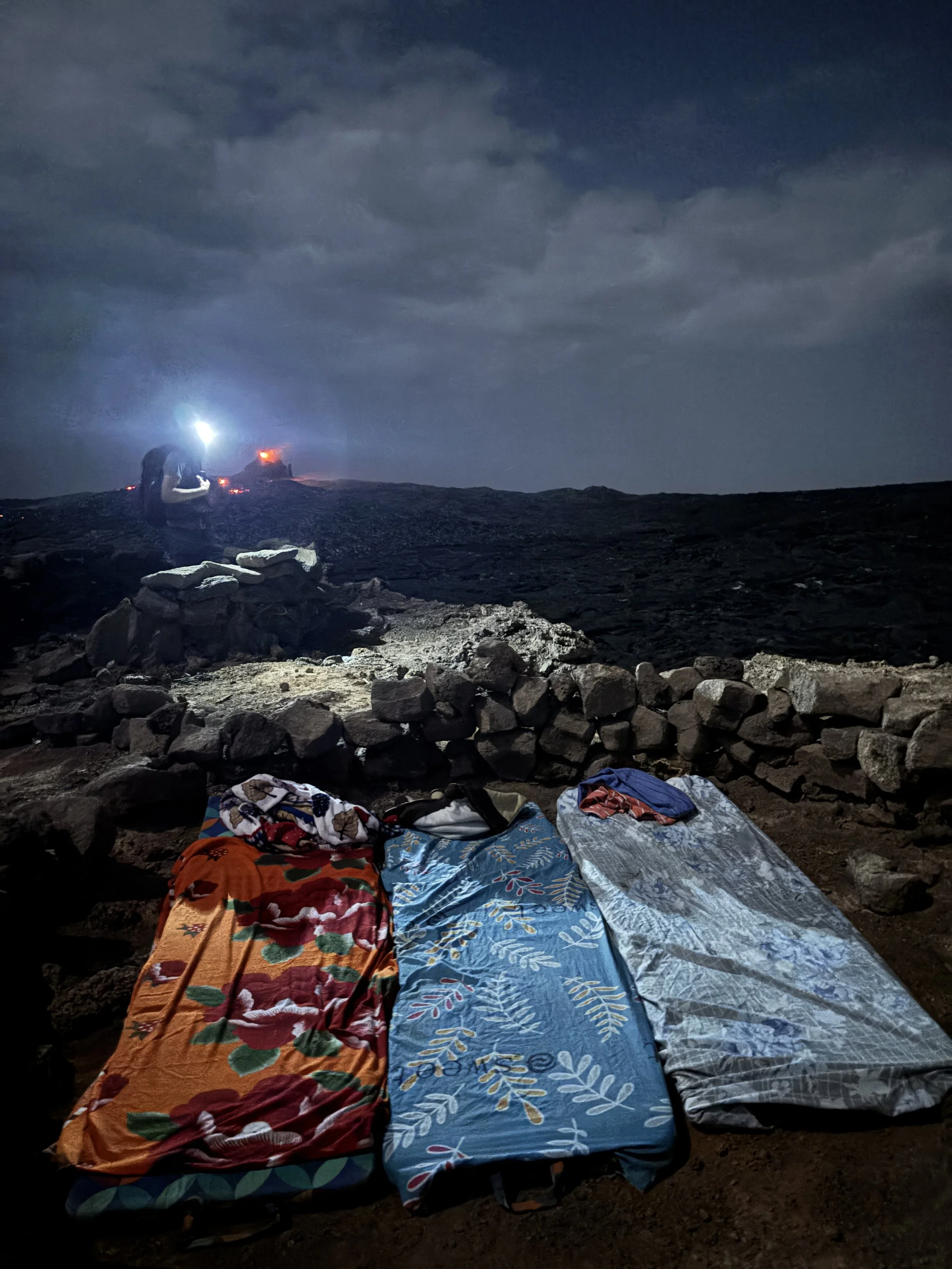
A Month in Ethiopia.
From volcanoes to rock-hewn churches, the birthplace of humanity reveals how, even in 2025, climate, faith, and tradition remain intertwined.
By the time I reached the base of Erta Ale, an active volcano whose name means “smoking mountain” in Afar, it was close to two in the morning. As I strapped on my headlamp, listening to the low, guttural spluttering of lava, I thought about how less than twenty-four hours earlier I’d been sitting under fluorescent lights at a work conference in Washington, D.C.
The hike up took about an hour. At a flat ridge, we laid out our mattresses for sleeping. Then Arre motioned for us to continue, down into the volcano’s caldera—likely one of the stupidest things I’ve ever done. I followed behind as he tapped the freshly cooled crust with a stick before each step. The lava was black, thin, and deceptive, like walking on charred eggshells, or meringue. Every so often one of us would fall through the first layer with one foot—there’d be a sharp crack, then we’d redirect.
The closer we got, the hotter and brighter it became—a sauna-like heat that throbbed against the skin. The sound of the lava was constant and violent, a deafening psh-psh-psh of molten rock meeting air. It was impossible not to feel very small. Hours later, from the safety of our tarps, we lay watching the lava spit orange light into the dark night. By morning, a thin layer of soot covered everything, including our faces.
After Etra Ale, we descended into the Danakil Depression, one of the lowest and hottest places on the planet, which has formed where three tectonic plates are slowly pulling apart.
A few days earlier, I had flown to Addis Ababa, then north to Tigray, a region still recovering from one of Africa’s most devastating modern conflicts. Between 2020 and 2022, the Tigray War pitted regional forces against the Ethiopian government, leaving more than 600,000 people dead and displacing millions. Even now, the scars are visible. Travel by road remains dangerous, so the only reliable way north is by air.
In Tigray, I met Arre, a local guide with a gentle voice, dreadlocks and a weathered 4x4. Together we drove nearly ten hours across some of the worst roads I’ve experienced in Africa: sandy roads made of fractured rock and volcanic debris that turned every mile into a test of patience. The air was dry and metallic, as if filtered through dust and heat.
Make it stand out.
It all begins with an idea. Maybe you want to launch a business. Maybe you want to turn a hobby into something more. Or maybe you have a creative project to share with the world. Whatever it is, the way you tell your story online can make all the difference.



